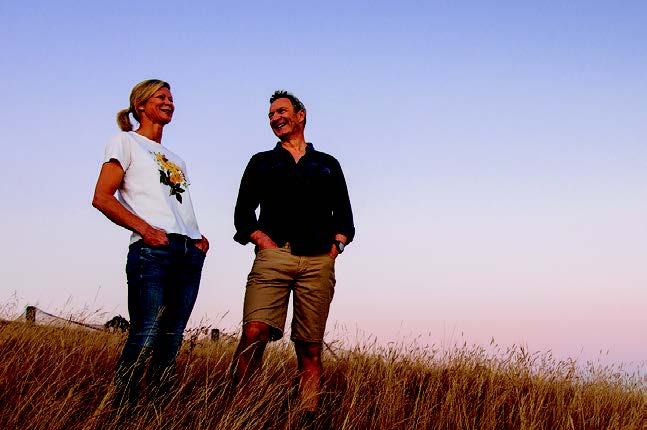Sophie Preece
Marlborough grape growers Will and Jayne Grigg are “cautiously optimistic” about the future of the region’s wine industry. “Everyone needs to play their part,” says Will, who grew up on Meadowbank Station and began to develop a vineyard on its river flats in 2001. “If we can delight our consumers with wines that give them positive memories each time they try them, it bodes well for the industry.”
The Griggs grow for five wineries, large and small, producing Sauvignon Blanc, Chardonnay, Pinot Noir and Pinot Gris, along with a little Gewürztraminer. Having 78% in Sauvignon Blanc and the rest in other varietals is a good balance, says Jayne, a winemaker who admits she’s “cherry picked” her favourites. “It makes it more interesting”. That broader portfolio is an advantage in the current market, Will says. “We found that after ‘08 as well; the varietals helped us through that period.”
An early budburst last year revealed bunch numbers 10% higher than average, leading him to shoot thin in November to drop crop potential and keep canopies open. That’s a cheaper time to control yield, he says, while acknowledging the risk of dropping crop before flowering. “You hope you have it right.”
Beautiful weather from late November to mid-December meant most varieties had an excellent flowering. Bunch weight estimates in the new year indicated an abundant crop for Sauvignon Blanc and Pinot Gris, so they thinned using mechanical shaking (page 49) in the Sauvignon as well as bunch thinning in some blocks. In their heaviest blocks they did both, shaking and then removing bunches.
Speaking in early March, on the cusp of their first Pinot Gris pick, Will is “really comfortable” with crop levels. Yield management has made for an expensive season, he says, “but the work is paying off now, ripening is coming along nicely and the fruit is in amazing condition.”
Will notes that times are tough for many wineries and growers, with the volatility in demand after Covid, coupled with the vagaries of supply from seasonal conditions, making it difficult to balance supply and demand. Growers have faced a “huge escalation in costs” since 2017/18, but they have really “ramped up” in the last couple of years. The reduction in grape prices has exacerbated that pressure, so growers are “definitely feeling the squeeze”, he says.

Marlborough must be nearing “peak production”, Will adds, noting that while more developments are coming on stream, a number of old vineyard blocks are being pulled out. The likelihood or timing of replanting will depend on demand, and “whether they have a market for their fruit or not”. For those who do redevelop, there’s opportunity to future-proof for increased efficiencies and longevity, with the likes of subsurface irrigation, better pruning techniques and technological advances, says Will, who was part of a driverless tractor trial a few years ago.
The future of Marlborough’s wine industry hinges on quality, he says. “Quality needs to be the focus in everything we do, from the vineyard to the winery.” New Zealand wine has a really bright future, “but the whole industry needs to work collectively to make sure that is so. We can’t take it for granted.”
This article was first published in New Zealand Winegrower magazine issue 151 and is republished with permission.












